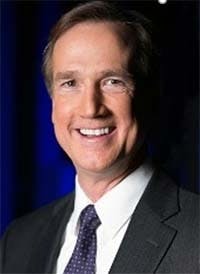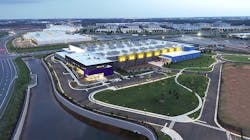Executive Insights: James Leach of RagingWire Data Centers 2Q 2019
The Data Center Frontier Executive Roundtable features insights from industry executives with lengthy experience in the data center industry. Here’s a look at the insights from James Leach of RagingWire Data Centers for the second quarter of 2019.
JAMES LEACH, RagingWire Data Centers
James Leach is the Vice President Marketing at RagingWire Data Centers. Leach is the overall marketing leader responsible for a data center portfolio of 2 million square feet and 177 megawatts of critical power at three massive campuses in Ashburn, Virginia; Dallas, Texas; and Sacramento, California. Leach has been at the forefront of developing innovative Internet services for enterprises. He was part of the core team that introduced data center colocation, cloud computing solutions, virtual private networks (VPNs) and route optimization, application hosting, content delivery networks (CDNs), Internet registry and Domain Name System (DNS) services, and web performance monitoring and testing.
Leach spent the first 15 years of his career at IBM starting out as an engineer and then moving into sales, business development and marketing. For the last 15 years, he has been a top marketing executive at Savvis, Internap, Neustar, Harris Corporation, and currently RagingWire. As part of NTT, RagingWire’s parent company and one of the largest and most financially strong information and communications technology solutions providers, Leach is part of the global marketing team responsible for 140 data center locations in 20 countries and regions as part of the Nexcenter brand.
Here’s the full text of James Leach’s insights from our Executive Roundtable:
Data Center Frontier: After a year of blockbuster leasing in 2018, the large hyperscalers appear to be less active in procuring new capacity in the first half of 2019. What does the prognosis for hyperscale deals look like in the short and long term? Are these requirements changing in size or structure?
James Leach: I can’t imagine ever describing a hyperscaler as being “less active” in anything! They are actively deploying massive amounts of compute, storage, and network around the world. They are promoting, expanding, and developing renewable energy options for data centers. They are driving new efficiencies in data center designs and operations.
What we’re seeing from the hyperscalers is more effective capacity planning, a desire for more precise delivery windows, and a need for onsite deployment services and project management – all of which we are delivering. With the roll-out of new subsea cables and dark fiber, look for the hyperscalers to expand network capacity, management, scalability, and resiliency to compliment the advances they are making in their compute and storage platforms.
Data Center Frontier: Edge computing is a trend with many layers and flavors. What types of edge computing are most relevant in 2019? What opportunities does the evolution of edge computing create for future data center infrastructure (and when)?
James Leach: Tech people love to name new IT architectures. A few months ago, we coined a phrase that combines Hyperscale + Edge to create “hedge” data centers. Clearly two of the biggest data center trends in 2018 were the dominance of massive, hyperscale cloud deployments and the emergence of new edge computing architectures.
We expect to see data center colocation products seamlessly integrating hyperscale and edge data centers to support new enterprise applications to support advanced technologies such as artificial intelligence, Internet of Things, blockchain, virtual reality, big data, etc. Keep an eye on the 100,000+ cell towers in the U.S. as a platform for edge roll-outs.
The Northern Virginia data center market is spread across a number of towns in Loudoun, Prince William and Fairfax counties, and shows signs of expanding into adjacent counties. (Photo: RagingWire Data Centers)
Data Center Frontier: The shift of enterprise IT workloads into third-party cloud platforms and colo facilities appears to be continuing. What strategies and services are proving most useful in working with enterprises in this transition?
James Leach: Increasingly we are hearing from our customers that would like us to include data center deployment services as part of their colocation solution. They want these services to be local, onsite, and consultative. Local is important because skills, available talent, and pricing can vary widely from market to market. You want to hire a data center deployment firm that knows the local suppliers and sub-contractors, and can optimize this mix for the project’s success.
Onsite is about having experience and knowledge of the actual data center facility and its staff. For example, each facility can have nuances regarding shipping and receiving, install timeframes, power and cooling systems, security, and telecommunications.
Finally, you want a service provider that is consultative, takes ownership of the project and is an excellent listener and problem solver. Data center projects typically have unique customer requirements that must be discussed and addressed.
Data Center Frontier: The rise of AI has boosted the use of new compute hardware to accelerate specific tasks, including GPUs, FPGAs, ASICs, TPUs and neural processing hardware as well as more powerful CPUs. How might the emergence of application-specific hardware impact data center design? What are the opportunities and challenges?
James Leach: A common thread that ties together these new specialized computing chips is power and cooling. These chips will expand the use of high density computing which then requires high density power and cooling. Our latest data center designs support 36 megawatts spread across four or six vaults in a facility with excellent economics, efficiency, and availability. With these new chips we may need a 36 megawatt vault with liquid cooled cabinets or immersion cooling.
The best data center designs will allow for a diverse deployment of specialized computing hardware for new high performance computing applications combined with the “rack and stack” servers to support established applications.

